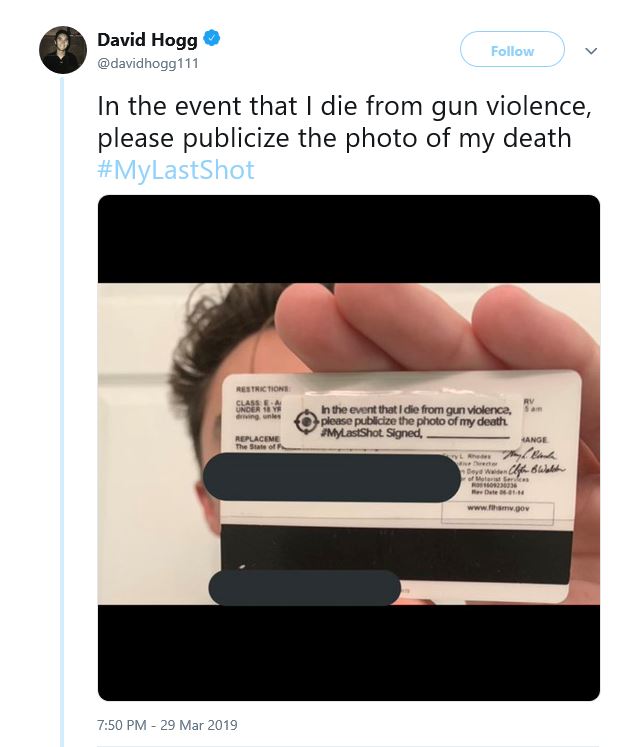California’s statute to confiscate all magazines over 10 rounds has been permanently enjoined by the United States District Court for the Southern District of California. The opinion was written by Judge Roger T. Benitez.
Previously, Judge Benitez had issued a preliminary injunction against the confiscation law, and the preliminary injunction was upheld by the Ninth Circuit, as discussed in this post. Today’s decision follows cross-motions for summary judgment, and makes the injunction permanent. The next step in Duncan v. Becerra will be an appeal to the Ninth Circuit by California Attorney General Xavier Becerra.
District Court permanently enjoins California magazine confiscation law
Don’t ask me if this means a crack in the bases and then the upcoming collapse of California’s Gun Laws. I know better than predicting the future of a case, yet I will remain hopeful. You need to read the brief, it is invigorating and goes point by point the whys and whatnots of the case. And also why is never a good idea to lie, specially to the court . Here are some samples of the brief.
Few would say that a 100 or 50-round rifle magazine in the hands of a murderer is a good idea. Yet, the “solution” for preventing a mass shooting exacts a high toll on the everyday freedom of ordinary law-abiding citizens. Many individual robberies, rapes, and shootings are not prevented by the State. Unless a law-abiding individual has a firearm for his or her own defense, the police typically arrive after it is too late. With rigor mortis setting in, they mark and bag the evidence, interview bystanders, and draw a chalk outline on the ground. But the victim, nevertheless, is dead, or raped, or robbed, or traumatized
That is the judge saying it, not the NRA or me or any other blogger.
Today, self-protection is most important. In the future, the common defense may once again be most important. Constitutional rights stand through time holding fast through the ebb and flow of current controversy. Needing a solution to a current law enforcement difficulty cannot be justification for ignoring the Bill of Rights as bad policy. Bad political ideas cannot be stopped by criminalizing bad political speech. Crime waves cannot be broken with warrantless searches and unreasonable seizures. Neither can the government response to a few mad men with guns and ammunition be a law that turns millions of responsible, law-abiding people trying to protect themselves into criminals. Yet, this is the effect of California’s large-capacity magazine law.
You guys have read me saying in this blog: Anybody who hates the Second Amendment, usually dislikes the rest of the Bill of Rights.
Teixeira v. Cty. of Alameda, 873 F.3d 670, 677 (9th Cir. 2017) (en banc) (“We recognized in Jackson that, although the Second Amendment ‘does not explicitly protect ammunition, [but] without bullets, the right to bear arms would be meaningless.’
Ouch. One for the idiots that keep wanting to put a 1,000% tax on ammunition.
Magazines holding more than 10 rounds are used for self-defense by law-abiding citizens. And they are common.28 Lawful in at least 41 states and under federal law, these magazines number in the millions. Plaintiff’s Exh. 1 (James Curcuruto Report), at 3 (“There are at least one hundred million magazines of a capacity of more than ten rounds in possession of American citizens, commonly used for various lawful purposes.
That one kills the Not In Common Use excuse. And so does the next:
To the extent that magazines holding more than 10 rounds may be less common within California, it would likely be the result of the State long criminalizing the buying, selling, importing, and manufacturing of these magazines. Saying that large capacity magazines are uncommon because they have been banned for so long is something of a tautology. It cannot be used as constitutional support for further banning. See Friedman v. City of Highland Park, Illinois, 784 F.3d 406, 409 (7th Cir. 2015) (“Yet it would be absurd to say that the reason why a particular weapon can be banned is that there is a statute banning it, so that it isn’t commonly used. A law’s existence can’t be the source of its own constitutional validity.”
It gets better.
3. Lethality is Not the Test
Some say that the use of “large capacity magazines” increases the lethality of gun violence. They point out that when large capacity magazines are used in mass shootings, more shots are fired, more people are wounded, and more wounds are fatal than in other mass shootings.31 That may or may not be true. Certainly, a gun when abused is lethal. A gun holding more than 10 rounds is lethal to more people than a gun holding less than 10 rounds, but it is not constitutionally decisive. Nothing in the Second Amendment makes lethality a factor to consider because a gun’s lethality, or dangerousness, is assumed. The Second Amendment does not exist to protect the right to bear down pillows and foam baseball bats. It protects guns and every gun is dangerous.
And more:
California law presently permits the lethality of a gun with a 10-round magazine. In other words, a gun with an 11-round magazine or a 15-round magazine is apparently too lethal to be possessed by a law-abiding citizen. A gun with a 10-round magazine is not. Missing is a constitutionally-permissible standard for testing acceptable lethality. The Attorney General offers no objective standard. Heller sets out a commonality standard that can be applied to magazine hardware: is the size of the magazine “common”? If so, the size is constitutionally-protected.
How many times have we asked Gun Control fanatics why 10 and not 11? I know I have lost count and they could never come up with a reason and apparently neither the Attorney General. And now comes the whammy.
If the “too lethal” standard is followed to its logical conclusion, the government may dictate in the future that a magazine of eight rounds is too lethal. And after that, it may dictate that a gun with a magazine holding three rounds is too lethal since a person usually fires only 2.2 rounds in self-defense. This stepped-down approach may continue32 until the time comes when government declares that only guns holding a single round are sufficiently lacking in lethality that they are both “safe” to possess and powerful enough to provide a means of self-defense
And the notation accompanying the above is even more brutal.
Artificial limits will eventually lead to disarmament. It is an insidious plan to disarm the populace and it depends on for its success a subjective standard of “necessary” lethality. It does not take the imagination of Jules Verne to predict that if all magazines over 10 rounds are somehow eliminated from California, the next mass shooting will be accomplished with guns holding only 10 rounds. To reduce gun violence, the state will close the newly christened 10-round “loophole” and use it as a justification to outlaw magazines holding more than 7 rounds. The legislature will determine that no more than 7 rounds are “necessary.” Then the next mass shooting will be accomplished with guns holding 7 rounds. To reduce the new gun violence, the state will close the 7-round “loophole” and outlaw magazines holding more than 5 rounds determining that no more than 5 rounds is “necessary.” And so it goes, until the only lawful firearm law-abiding responsible citizens will be permitted to possess is a single-shot handgun. Or perhaps, one gun, but no ammunition. Or ammunition issued only to persons deemed trustworthy.
This is like watching Mike Tyson beat up a 4-year-old. I know the post is getting long, so let me close with this juicy bit.
The Attorney General names five additional states that enacted firing-capacity restrictions in the 1930s with capacity limits less than 10 rounds. But he is not entirely accurate. His first example is not an example, at all. For his first example, he says that, “[i]n 1933, South Dakota banned any ‘weapon from which more than five shots or bullets may be rapidly or automatically, or semi-automatically discharged from a magazine [by a single function of the firing device].’” Def’s Oppo. (4/9/18) at 4 (emphasis in original). Actually, this was not a ban. This was South Dakota’s definition of a machine gun
That is legalese for ” You got caught lying to a judge.”
The Attorney General’s second example of a longstanding firing-capacity prohibition is a Virginia ban enacted in 1934. However, like the first South Dakota example, the second example is not an example, at all. The Attorney General describes the law as a ban on firearms that discharge seven rounds rapidly. It is not ban. It also defines “machine gun.”
This one is: “You got caught lying to a judge again.”
The third cited example is like the first two. It is an Act passed by the South Carolina legislature in 1934 titled, An Act Regulating the Use and Possession of Machine Guns. Ex. E to Def.’s Request for Judicial Notice (filed 4/9/18). These three statutes are examples of machine gun bans that are prohibited because of their ability to continuously fire rounds with a single trigger pull, rather than their overall firing-capacity.
Third time is the charm.
I am leaving this one in closing. From page 38:
A law like § 32310 that prevents a law-abiding citizen from obtaining a firearm with enough rounds to defend self, family, and property in and around the home certainly implicates the core of the Second Amendment. When a person has fired the permitted 10 rounds and the danger persists, a statute limiting magazine size to only 10 rounds severely burdens that core right to selfdefense.
I stopped here for the night. Not even halfway through it and it is an amazing document. It is your duty to read it all and keep a copy on standby to bitchslap the opposition with it.
Like this:
Like Loading...


